Hi! Amanda here. I’m living in Istanbul with my two “monkeys,” who are 6 and 3. We have definitely had some challenges here after getting used to mama-life back home in Los Angeles. Add to our move this new Covid-19 reality and total lockdown for all “kids” under 20 for the last almost 3 months the fact that we are living in an apartment, no less. It’s safe to say it has been absolutely crucial to keep busy with anything and everything we could do in order to stay sane. So where is one of our favorite spots to keep busy? The kitchen!
I absolutely love getting my kids into the kitchen to cook and bake with me. It is a very rewarding experience for all of us. I get to share my passion with them while they are learning and having fun, and we all enjoy spending quality time together. A win-win for everyone! And the cherry on top is that it keeps them from getting into some of their not-so-charming shenanigans over some toy or another.
During this strange time in our lives, with our kids home all day, every day, it may feel like we are spending a lot of time together, but are we really bonding? This is why I like the activity of creating something in the kitchen together. It forces us to be focused on the activity at hand while also having to work successfully together to get the desired end result. What we create is key. I find it’s helpful if it’s something they are excited to eat. Baked goods like cookies, cupcakes and muffins are always winners. This is when I don’t have to do any luring to get them to help me. The kids volunteer happily, as it means they will get a treat when they’re finished.
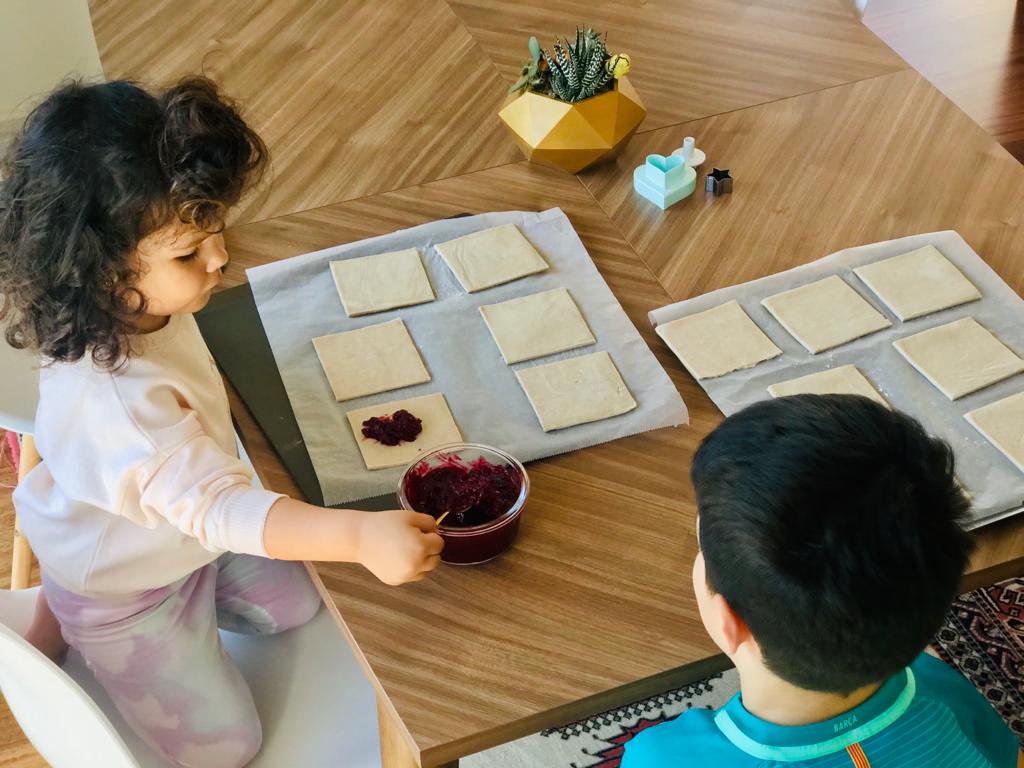
I use this opportunity to try to include any possible healthy ingredients. Whole wheat flour, honey or bananas instead of sugar, chia or flax seeds, and fresh seasonal fruits can all be great additions to your homemade baked goods to help kids understand how something can be quite yummy while still being pretty good for them. A perfect example, zucchini pancakes, are my little ones’ favorite type of pancake, and they know exactly what they are made of since they helped me put them together. (That doesn’t quite mean that they’re eager to pick up a forkful of roasted zucchini for dinner, but it’s a start.)
And speaking of dinner, when it comes to getting the kids to put their culinary skills to work for a savory recipe, the same rule pretty much applies–if it’s not something they want to eat, chances are you’ll probably lose their interest. So, in an effort to teach them that not everything delicious they make has to be dessert, I definitely try to raise the fun factor here. Recipes that really get their hands dirty or require a lot of involvement like rolling, smushing, or pounding usually engage them the most. They have a lot of fun and also release some of those wiggly sillies. Let’s face it, there’s a lot of energy they’re not burning these days while at home, and any outlet for them to “let off steam” is key to parental survival.
Making things like meatballs, meatloaf, handmade crackers, fresh bread, or healthy smoothies are really great for putting those (clean) little fingers to work. They’ll love getting the chance to mix the meat by hand or roll it into little balls. (Just make sure to teach them the importance of being mindful when handling raw meat.) Kneading dough is one of our favorite kitchen activities and requires a good amount of strength and energy. Rolling it is a task they equally enjoy and also teaches them the importance of evenness. Pounding chicken or chopping veggies for a soup is something they are happy to do. My son pounds away at enough of his toys, why not do it while helping with dinner? Cutting fruit and separating spinach leaves for smoothies are also good tasks to get the kids involved.
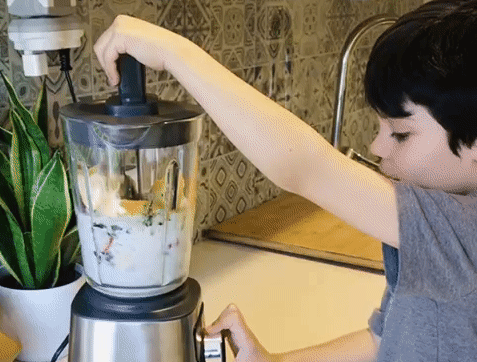
Does homemade pizza night sound fun? It is. Let your littles help chop the toppings, and you might just find them throwing on some colorful vegetables they might not otherwise welcome. The same goes for tacos or one of our go-to dinners, taco bowls. It’s a great meal to load up with healthful ingredients that you can all share the effort to make. If you have more than one kid helping, divide the tasks; or for something like stirring, give each one 10 turns around the bowl, and then pass it on. Let the youngest practice the counting.
When giving the kids a chance to chop, choose things like cucumbers, zucchini, asparagus, or broccoli and cauliflower florets that have already been cut from the harder core. These can all be easily cut with a regular butter knife. Bananas and strawberries work well for gentle chopping, too. Something a little more labor and time intensive that my daughter absolutely loves is shucking peas. We cut off one end so that she can easily open them up and take out those little green spring jewels.
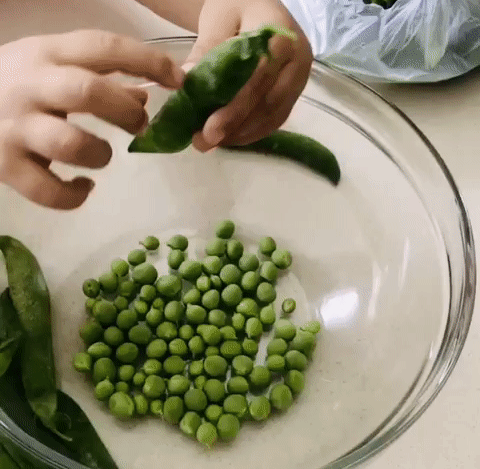
Working with produce provides a great opportunity to teach about seasonal foods to be appreciated during their short window of peak availability and best flavor. One of our favorite weekend activities used to be going to the local farmers market or bazaar and seeing and tasting what delicious things were available. It is an activity I hope we can still do one day when this pandemic is far behind us. In the meantime, you can try growing something edible at home in any sunny little spot you have and then using that activity as an opportunity to pass on the farm-to-table idea.
Two key factors I like to teach my kids about while working in the kitchen, besides safety with hot and sharp items, are using mise en place and also cleaning up as you go. The importance of mise en place is the first thing I learned in culinary school. It means everything in its place. That basically translates to having all the tools and ingredients necessary for a particular recipe, organized right in front of you to ensure optimum success. Starting the process of making spaghetti and meatballs might not go so well if halfway through the task, you realize you don’t have tomatoes or sauce. And cleaning up as you go is probably one of the most valuable practices I gained as a chef. I try to emphasize it to anyone I cook with, not just my kids. Cleaning as you go ensures organization, a smoother cooking or baking experience, fewer opportunities for possible injury, and less time in the kitchen in the end. Let’s face it, though, things can get a tad bit messier when the children are doing the cooking.
Bottom line, getting the whole family together in the kitchen is a good idea. As a parent or caregiver, you’re rewarded with priceless time together as well as a great opportunity to see how smart, helpful, and even funny your growing little humans can be. All the while, everyone is making a potential masterpiece. If it doesn’t turn out as planned, that’s okay, too. Now you have the perfect chance to teach your family some resilience and that something beautiful (and also delicious) can still come from what seemed like a failure. When that isn’t the case, you can laugh about it and troubleshoot together what went wrong.
Your kids will not only love the time with you but will also gain a good sense of independence and confidence. To create something with their hands that they’re proud of and can eat and share, too, is gold. And the more you get them involved, chances are, with a little luck, the more likely they will be to keep an open mind about what they eat, widening their palate in the process.

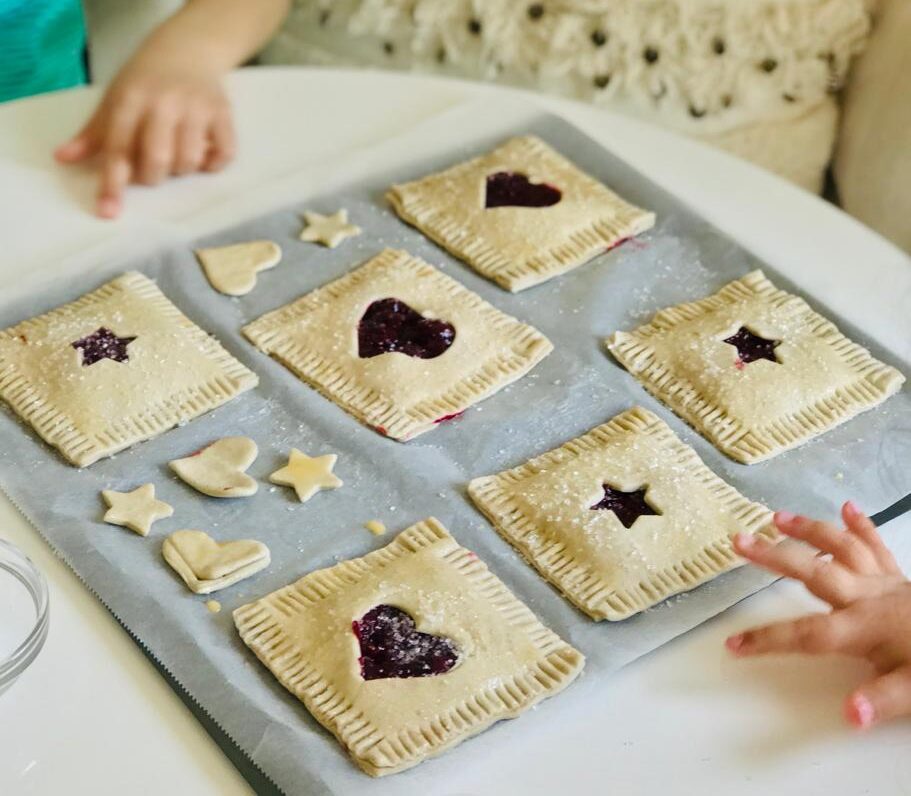
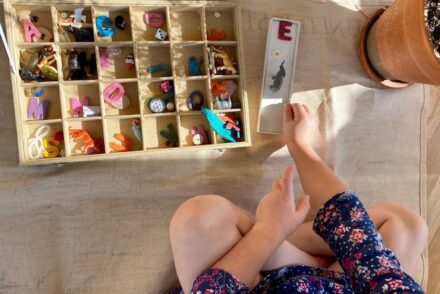



No Comments